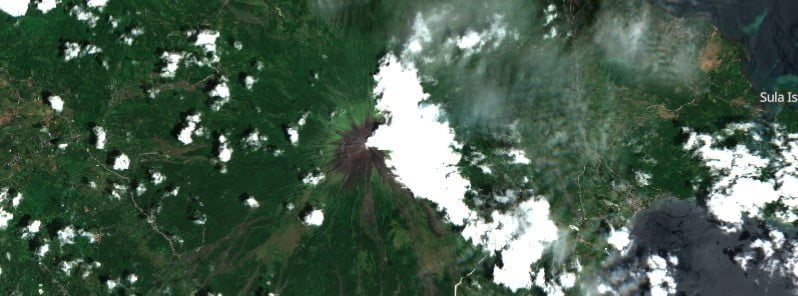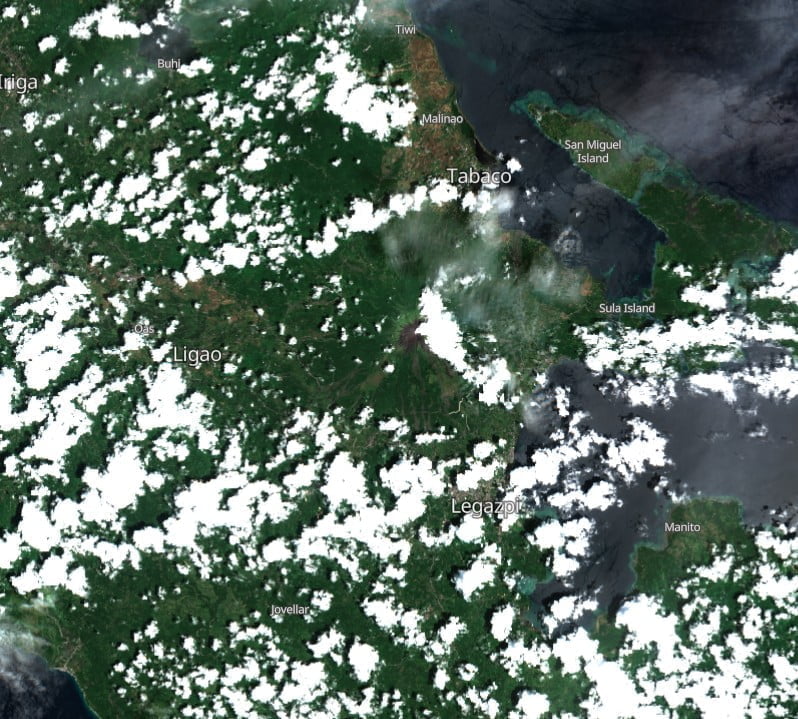Alert Level for Mayon volcano raised to 2, Philippines

PHIVOLCS raised the Alert Level for Mayon volcano from 1 to 2 on October 7, 2022. The current unrest is driven by shallow magmatic processes that could eventually lead to phreatic eruptions or even precede hazardous magmatic eruption.
- The public is strongly advised to be vigilant and desist from entering the 6 km (3.7 miles) radius Permanent Danger Zone (PDZ) to minimize risks from sudden explosions, rockfall, and landslides.
Since the Alert Level status of Mayon Volcano was raised from Alert Level 0 to Alert Level 1 on August 21, 2022, monitored parameters have been generally unremarkable. However, daily visual and camera monitoring of the summit crater revealed a continued aseismic growth of its lava dome, PHIVOLCS reports.1
As of October 4, 2022, the lava dome has increased in volume by approximately 48 000 m3 since August 20, 2022.
Ocular inspection of the summit during an aerial survey on October 7 confirmed the presence of freshly extruded lava at the base of the summit lava dome. The event was signaled only by observations of thin remobilized light-colored ash, likely derived from lava fragmentation during the extrusion process, on the floor of the Miisi Gully since October 2, 2022.

In contrast, short-term ground deformation data relative to August 2022 yielded short-term deflation on the eastern to southeastern Mayon edifice, and only slight, short-term inflation on the general western to southwestern flanks.
Longer-term ground deformation parameters based on EDM, Precise Leveling, continuous GPS, and electronic tilt monitoring show that Mayon has been slightly inflated, especially on the northwest and southeast, since 2020.
Lastly, SO2 emission last measured by campaign Flyspec on October 1, 2022, averaged 391 t/d, below baseline levels.
In view thereof, DOST-PHIVOLCS has raised the Alert Level from Alert Level 1 (abnormal) to Alert Level 2 (increasing unrest). This means that there is current unrest driven by shallow magmatic processes that could eventually lead to phreatic eruptions or even precede hazardous magmatic eruption.
The public is strongly advised to be vigilant and desist from entering the 6 km (3.7 miles) radius Permanent Danger Zone (PDZ) to minimize risks from sudden explosions, rockfall and landslides.
In case of ash fall events that may affect communities downwind of Mayon’s crater, people should cover their nose and mouth with damp, clean cloth or dust mask.
Geological summary
Beautifully symmetrical Mayon volcano, which rises to 2 462 m (8 077 feet) above the Albay Gulf, is the Philippines’ most active volcano.
The structurally simple volcano has steep upper slopes averaging 35-40 degrees that are capped by a small summit crater. Historical eruptions at this basaltic-andesitic volcano date back to 1616 and range from strombolian to basaltic plinian, with cyclical activity beginning with basaltic eruptions, followed by longer-term andesitic lava flows.
Eruptions occur predominately from the central conduit and have also produced lava flows that travel far down the flanks.
Pyroclastic flows and mudflows have commonly swept down many of the approximately 40 ravines that radiate from the summit and have often devastated populated lowland areas.
Mayon’s most violent eruption, in 1814, killed more than 1 200 people and devastated several towns.2
References:
1 MAYON VOLCANO BULLETIN – PHIVOLCS – October 7, 2022
2 Mayon – Geological summary – GVP
Featured image: Mayon volcano on September 21, 2022. Credit: Copernicus EU/Sentinel-2, EO Browser, The Watchers

Commenting rules and guidelines
We value the thoughts and opinions of our readers and welcome healthy discussions on our website. In order to maintain a respectful and positive community, we ask that all commenters follow these rules.